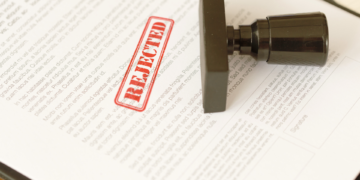Designing surveys is a cornerstone of research, providing invaluable data and insights across a variety of fields. To ensure that your survey yields reliable and valid results, it’s crucial to employ the best techniques for designing and executing your survey. In this ultimate guide, we’ll explore the top 5 techniques to perfect your surveys and enhance the reliability of your research.
01
of 05
Define Clear Objectives and Research Questions
Why It Matters
Before crafting your survey, clearly define your research objectives and questions. This step is critical as it directs the entire design process, ensuring that your survey captures relevant and precise data. Vague or poorly defined objectives can lead to unclear results and hinder the effectiveness of your research.
How to Implement
- Identify Specific Goals: Determine what you want to achieve with your survey. Are you looking to understand customer satisfaction, measure attitudes, or gather demographic information?
- Formulate Research Questions: Translate your objectives into specific, actionable research questions that your survey will address.
- Align Survey Content: Ensure that every question in your survey is directly related to your research questions and objectives.
02
of 05
Design Effective Survey Questions
Why It Matters
The quality of your survey questions significantly impacts the reliability of your results. Well-designed questions minimize ambiguity and bias, ensuring that respondents provide accurate and meaningful answers.
How to Implement
- Use Clear and Simple Language: Avoid complex wording and jargon. Ensure that questions are easily understood by all respondents.
- Avoid Leading Questions: Frame questions neutrally to avoid influencing respondents’ answers.
- Employ Various Question Types: Use a mix of question types, such as multiple-choice, Likert scales, and open-ended questions, to gather diverse data and insights.
03
of 05
Ensure a Representative Sample
Why It Matters
A representative sample is essential for generalizing survey results to the broader population. If your sample is biased or unrepresentative, your findings may not accurately reflect the views or behaviors of your target group.
How to Implement
- Define Your Target Population: Clearly identify the group you want to study.
- Choose an Appropriate Sampling Method: Use methods such as random sampling, stratified sampling, or cluster sampling to ensure your sample represents the population.
- Monitor Sample Size: Ensure your sample size is large enough to provide statistically significant results and account for potential non-responses.
04
of 05
Pilot Test Your Survey
Why It Matters
A pilot test, or pre-test, involves administering your survey to a small group before the full launch. This process helps identify potential issues in your survey design and question clarity, allowing you to make necessary adjustments.
How to Implement
- Select a Test Group: Choose a small, representative subset of your target population for the pilot test.
- Collect Feedback: Gather feedback on question clarity, survey length, and overall user experience.
- Revise Based on Findings: Make necessary adjustments to address any issues identified during the pilot test.
05
of 05
Analyze and Interpret Data Carefully
Why It Matters
Proper data analysis and interpretation are crucial for drawing accurate conclusions from your survey. Effective analysis helps uncover trends, patterns, and insights, while careful interpretation ensures that your findings are valid and actionable.
How to Implement
- Choose the Right Analysis Techniques: Depending on your data type, use appropriate statistical methods for analysis, such as descriptive statistics, inferential statistics, or qualitative analysis.
- Look for Trends and Patterns: Identify key trends, patterns, and correlations in your data.
- Verify Findings: Cross-check results with other data sources or studies to validate your findings.





































